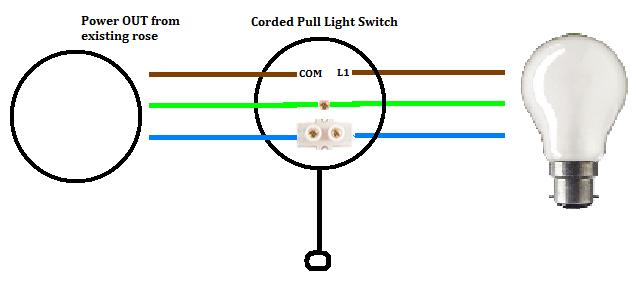Hi,
I need some advice please. I plan on installing a simple light fitting in my loft space which will use a "pull cord light switch". I do have some basic wiring experience and plenty of reference books with one of them dating back to the early 70s!!! Also, I'm very thorough, so I'm confident I can do this work to a high standard as long as I take my time.
It's more practical and cost effective to 'cut' into the circuit than extend it from the last ceiling rose isn't it? The problem is, I need to make sure I'm cutting into the main circuit cable and not a light switch cable so is there an easy way of finding out? I was going to find a cable which is nearest to the spot where the light will be fixed then determine whether it's the circuit cable or light switch cable so I was going to disconnect every light switch cable from every ceiling rose on the upstairs floor and then check if the cable (previously chosen earlier) is still live, that would indicate that it's the circuit cable and not a light switch cable; but I don't know if this is how it is done or not and I want to do it the right way or maybe there is an easier way.
so is there an easy way of finding out? I was going to find a cable which is nearest to the spot where the light will be fixed then determine whether it's the circuit cable or light switch cable so I was going to disconnect every light switch cable from every ceiling rose on the upstairs floor and then check if the cable (previously chosen earlier) is still live, that would indicate that it's the circuit cable and not a light switch cable; but I don't know if this is how it is done or not and I want to do it the right way or maybe there is an easier way.
BTW, the lighting installation is loop-in and there's 6 ceiling roses on the upstairs floor.
This will be my first proper wiring DIY project
Hope I'm on the right track so far?
*Waits for someone to say that you can't do this and you can't do that
 *
*
I need some advice please. I plan on installing a simple light fitting in my loft space which will use a "pull cord light switch". I do have some basic wiring experience and plenty of reference books with one of them dating back to the early 70s!!! Also, I'm very thorough, so I'm confident I can do this work to a high standard as long as I take my time.
It's more practical and cost effective to 'cut' into the circuit than extend it from the last ceiling rose isn't it? The problem is, I need to make sure I'm cutting into the main circuit cable and not a light switch cable
BTW, the lighting installation is loop-in and there's 6 ceiling roses on the upstairs floor.
This will be my first proper wiring DIY project
Hope I'm on the right track so far?
*Waits for someone to say that you can't do this and you can't do that



